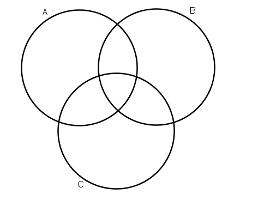List of Syllogistic Fallacies
Contents
Definition
Syllogistic fallacies are usually formal fallacies occuring in syllogisms.
Syllogism Definition
A syllogism (Greek: συλλογισμός, syllogismos, ‘conclusion, inference’) is a kind of logical argument that applies deductive reasoning to arrive at a conclusion based on two or more propositions that are asserted or assumed to be true.

Syllogistic arguments are usually represented in a three-line form, for example:
All mammals are warm blooded
Bats are mammals
Therefore, bats are warmblooded
Another classic syllogism example is from Aristotle:
All men are mortal.
Socrates is a man.
Therefore, Socrates is mortal.
Here from the combination of a general statement and a specific statement, a conclusion is deduced.
Major premise: A general statement.
Minor premise: A specific statement.
Conclusion: based on the two premises.
For example, knowing that all men are mortal (major premise) and that Socrates is a man (minor premise), we may validly conclude that Socrates is mortal.
Syllogism Types and respective fallacies
There are several types of syllogism: conditional, categorical, disjunctive, statistical, polysyllogism. Some fallacies can occur only in particular types of syllogisms though Fallacy of four terms can occur in any but polysyllogism and disjunctive syllogism.
Syllogisms are particularly interesting in persuasion as they include assumptions that many people accept which allow false statements or (often unspoken) conclusions to appear to be true.
Conditional Syllogism
Conditional syllogism follows an “If A is true and B is true then C is true” pattern of logic. For example:
If I work hard
and the weather permits
I will finish paining the fence before lunch
Or
If I wote for Greens
and most of others do the same
Greens will get the majority in parliament
Categorical Syllogism
Categorical syllogisms follow pattern
If A is in C and B is in A then B is in C.
Example:
All planets are spheroids
The Earth is a planet
Therefore, The Earth is a spheroid

Categorical Syllogism follows these six rules, if any of it broken, syllogism is not well constructed or we must have Syllogistic fallacy:
- There must be three terms: the major premise, the minor premise, and the conclusion.
- The minor premise must be distributed in at least one other premise.
- Any terms distributed in the conclusion must be distributed in the relevant premise.
- Do not use two negative premises.
- If one of the two premises are negative, the conclusion must be negative.
- From two universal premises, no conclusion may be drawn.
In categorical syllogisms the following fallacies can occur:
Existential fallacy
Also called existential instantiation happens when reasoning assumes that all object classes are not empty. For example this fallacy assumes unicorns do exist:
Every unicorn definitely has a horn on its forehead
Fallacy of the undistributed middle
All A is B. All C is B. Therefore all C is A.
This reasoning error is described on the formal fallacies page.
Illicit major fallacy
All X is Y. No P (which is a subset of Y) is X. Therefore no P is Y.
Happening when the major premise is undistributed, for example, celestial bodies:
No planets are stars.
Therefore, no planets are celestial bodies.
Illicit minor fallacy
All X are Y. All Y are P. Therefore all P are X.
Happening when minor term is distributed in the conclusion, but not in the minor premise:
All Land Cruisers are Toyotas.
All Toyotas are Cars.
Therefore, all Cars are Land Cruisers.
Fallacy of necessity
Also called Modal scope fallacy is happening when degree of necessity is placed in the conclusion.
All pets are domestic animal My dog is a pet It can not go astray
That’s a fallacious reasoning because it can and stop being a pet alltogether. See more details.
Fallacy of exclusive premises
Syllogism is invalid because both of its premises are negative. See rule number 4 above.
No cats are dogs.
Some dogs are not pets.
Therefore, some pets are not cats.
Affirmative conclusion from a negative premise
Also called illicit negative when syllogism has a positive conclusion and one or two negative premises (Broken rule number 5 bove.):
No cats are dogs
And no dogs can fly
Therefore all cats can fly.
Negative conclusion from affirmative premises
The inability of affirmative premises to reach a negative conclusion is usually cited as one of the basic rules of constructing a valid categorical syllogism. So drawing negative conclusion yet having both premises affirmative example could be:
All dogs are mammals. All mammals are animals. Therefore, no dogs are animals.
Disjunctive Syllogism
If A is true, then B is false (A or B)
In disjunctive syllogisms the fallacy to watch for is Affirming a Disjunct.
Statistical syllogisms:
Statistical syllogisms are arguments based on a generalization. In this class of syllogism the dicto simpliciter fallacies are occuring: Accident and Converse Accident.
Fallacy of Accident
The informal fallacy of accident (also called destroying the exception or a dicto simpliciter ad dictum secundum quid) is a deductively valid but unsound argument occurring in a statistical syllogism (an argument based on a generalization) when an exception to a rule of thumb is ignored. It is one of the thirteen fallacies originally identified by Aristotle in Sophistical Refutations. See also Accident Fallacy in Hasty Generalizations.
The fallacy occurs when one attempts to apply a general rule to an irrelevant situation. For example:
Cutting people with knives is a crime.
Surgeons cut people with knives.
Surgeons are criminals.
Fallacy of Converse Accident
This fallacy also called reverse accident, destroying the exception, or a dicto secundum quid ad dictum simpliciter is an informal fallacy that can occur in a statistical syllogism when a rule that applies only to an exceptional case is wrongly applied to all cases in general. For example:
If we allow people with glaucoma to use medical marijuana, then everyone should be allowed to use marijuana because
People with glaucoma use marijuana.
People with glaucoma should be allowed to choose what substances they use.
Therefore, all people who use marijuana should be allowed to choose what substances they use.
The inductive version of this fallacy is called hasty generalization. See faulty generalization. This fallacy (of C.A.) is very similar to the Slippery Slope.
The two arguments imply there is no difference between the exception and the rule, though the above argument using converse accident is an argument for full legal use of marijuana given that glaucoma patients use it. The argument based on the slippery slope argues against medicinal use of marijuana because it will lead to full use.
Polysyllogism and others
A polysyllogism, is a form of argument in which a series of incomplete syllogisms is so arranged that the predicate of each premise forms the subject of the next until the subject of the first is joined with the predicate of the last in the conclusion. For example:
All lions are big cats,
All big cats are predators,
And all predators are carnivores.
Therefore all lions are carnivores
There are other syllogism types also:
- Hypothetical syllogism
- Legal syllogism
- Prosleptic syllogism
- Quasi-syllogism
But we will be describing them later.
More info: